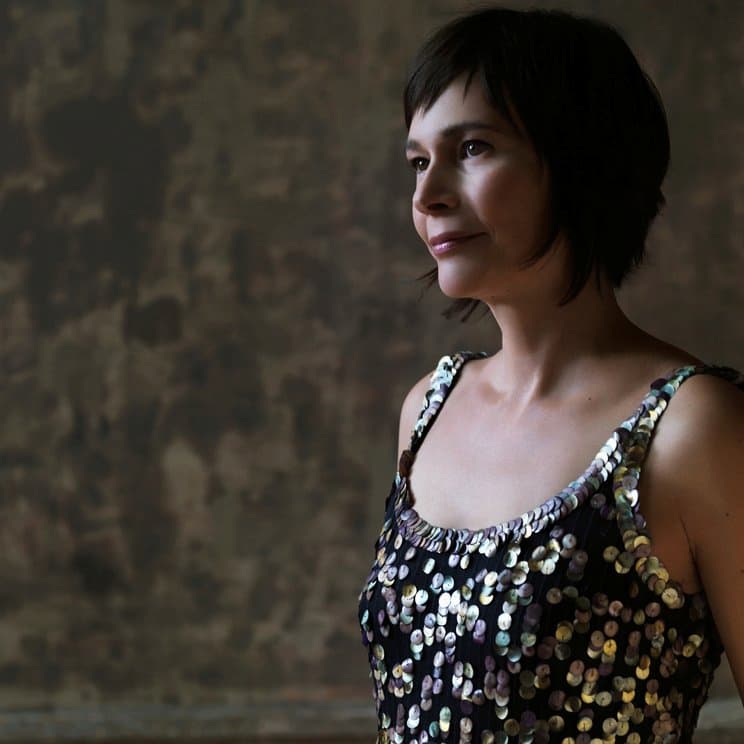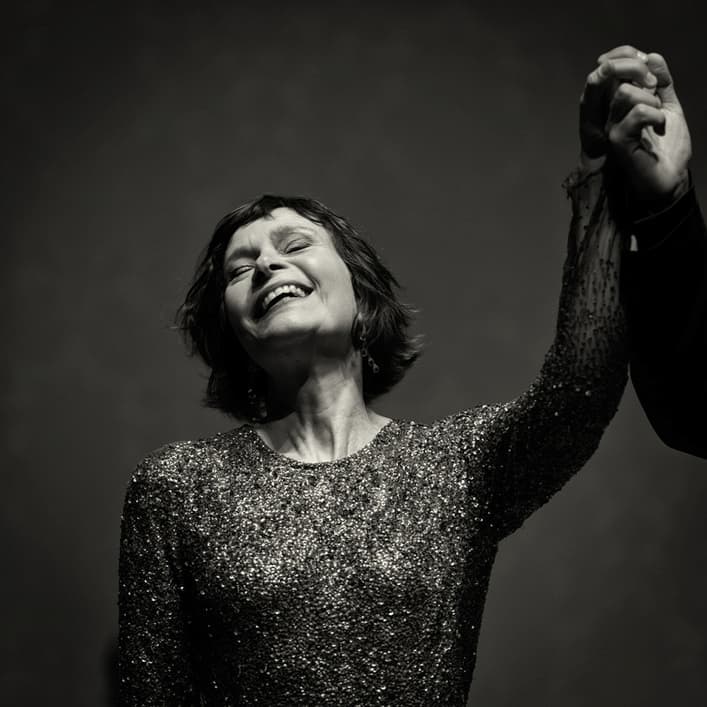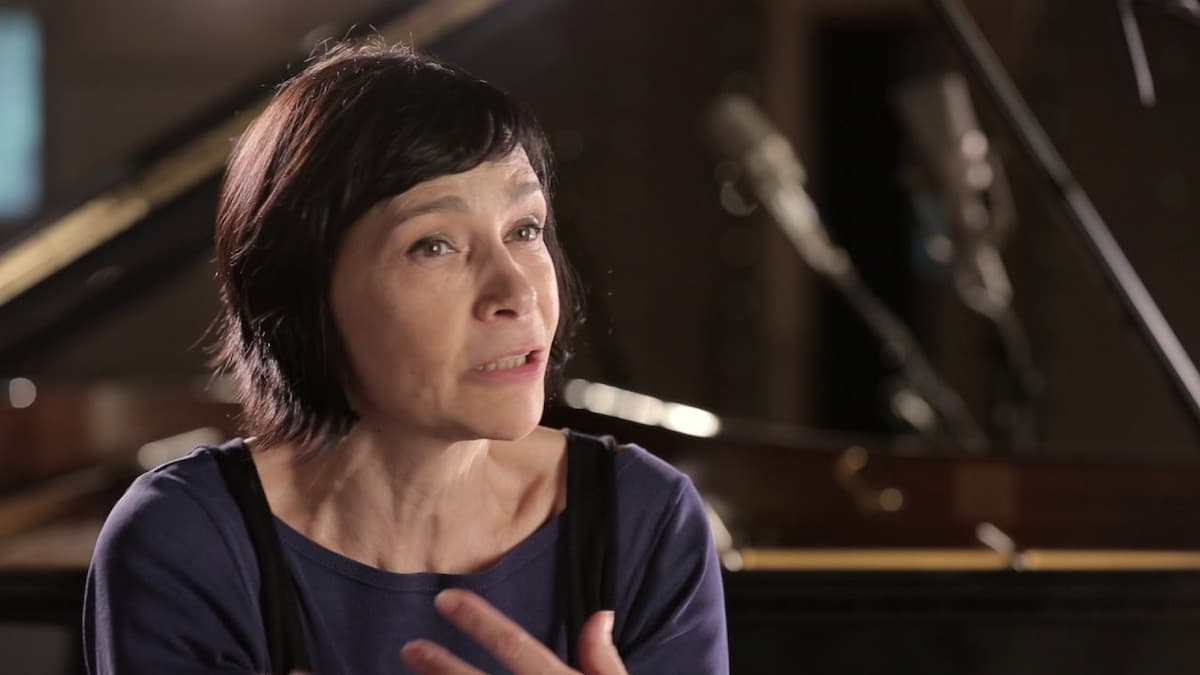Sandrine Piau initially made her name by working with William Christie in the field of Baroque music. Today, she commands a formidably wide-ranging repertoire, embracing operatic roles from Mozart to Poulenc and from Debussy to Britten. She also takes pleasure in solo recitals, and as a singer of both French and German repertoire, Piau has performed at the Théâtre des Bouffes du Nord in Paris, The Wigmore Hall in London, and Carnegie Hall in New York. She was awarded the “Chevalier de l’Ordre des Arts et des Lettres” from the French Ministry of Culture and received the 2009 “Opera Singer of the Year” award at Les Victoires de la Musique awards.
Sandrine Piau Performs Rameau’s “L’Air de la Folie”
The Beginning: Harp Lessons

Sandrine Piau © Antoine Le Grand/Naïve
Sandrine Piau was born on 5 June 1965 in Issy-les-Moulineaux, Paris. She hailed from a music-loving family, and she loves to tell the story that her father took her to see Walt Disney’s The Aristocats as a little girl. Her favourite character turned out to be the Duchess, the elegant, beautiful, and ladylike Turkish Angora cat. Since the Dutchess is also a connoisseur of music, Sandrine asked her parents for harp lessons.
It was obvious that Sandrine had great musical aptitude, and at the age of 10, her parents enrolled her in France’s premier children’s chorus, La Maîtrise de Radio France. This venerable institution operates like a choir school, with the day split between regular academic work and musical activities. Sandrine remembers, “I became independent, taking the metro by myself, and with my best friend, went to see a host of shows. I loved the backstage smells at the Opéra Garnier as much as the music.”
Henri Duparc: La vie antérieure (Sandrine Piau, soprano; David Kadouch, piano)
At the Paris Conservatoire

Sandrine Piau in Mozart’s Marriage of Figaro
Piau was accepted into the Paris Conservatoire at the age of 18, and she specialized in harp performance. She recalls, “It was the time that the composer Alain Louvier was the Director of the Conservatoire, so my world was the harp, and playing a lot of contemporary music.” To supplement her income, Piau sang in a choir with Philippe Herreweghe. “The choir was good, and it was good to be with people too.”
Herreweghe had two choirs, the Collegium Vocale in Ghent and the Chapelle Royale in Paris, and sometimes both choirs worked together on projects. Piau auditioned to sing Bach with Herreweghe, but he told her that her voice was too romantic. “So I sang Bruckner, Reger and Mendelssohn for him, as a mezzo. One day, he discovered that I had more high notes than any other soprano in the choir, so I switched from mezzo to soprano. I still couldn’t sing Bach with him.”
Sandrine Piau Performs Mozart’s “Laudate Dominum”
Studying and Working With William Christie

Sandrine Piau
After studying harp for two years, Piau decided to take a class with period-performance pioneer William Christie. His class was called “Interprétation de La Musique Vocale Ancienne,” and it was all rather mysterious. “I was a specialist in modern and contemporary music as a harp player. Suddenly, this was a jump back by two centuries. It was music so exciting and so modern.”
Christie told her, “if you leave the harp behind, you will be a singer with me.” Piau hesitated as she’d been playing the harp seriously for years and because period-performance was still a fringe activity. Piau remembered how people used to say, “as a singer, if you can’t do anything else, you can sing baroque music and operetta.”
Richard Strauss: 4 Letzte Lieder (4 Last Songs), TrV 296 (Sandrine Piau, soprano; Orchestre Victor Hugo Franche-Comté; Jean-Francois Verdier, cond.)
Leaving the Valley of Tears

Eventually, Piau escaped the valley of tears as an under-employed harpist and stepped into the world of baroque opera. As she explained, “I switched from my 47 harp strings to two vocal chords.” Working with Christie wasn’t easy, and they had some spectacular arguments. “It was like Taylor and Burton in Who’s Afraid of Virginia Woolf.” Piau soon appeared in Christie’s productions at the Festival d’Aix-en-Provence: Purcell’s Fairy Queen (1989), Rameau’s Les Indes galantes (1990) and Castor et Pollux (1991).
As Piau matured as a singer, she picked up a record contract, and things opened up. “Everything was possible. France was a privileged place to live with baroque music, and you didn’t need an agent or go to auditions. The conductors came to each other’s concerts, so if they liked you, they’d say, come sing with me.” Of course, Piau has gone well beyond a baroque specialisation, but she still fondly recalls her early days of musical discovery.
For more of the best in classical music, sign up for our E-Newsletter
